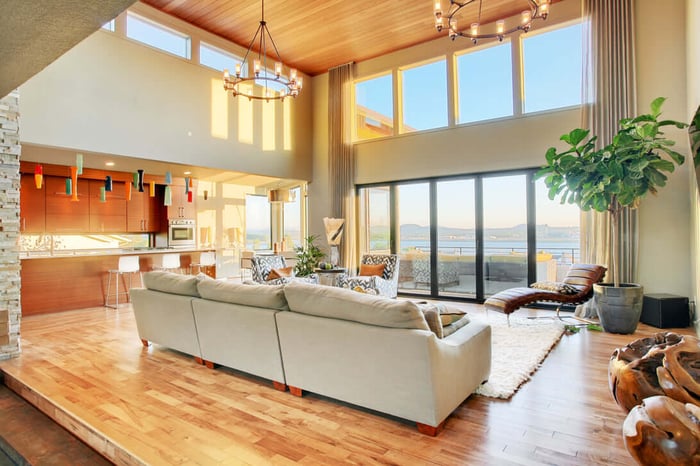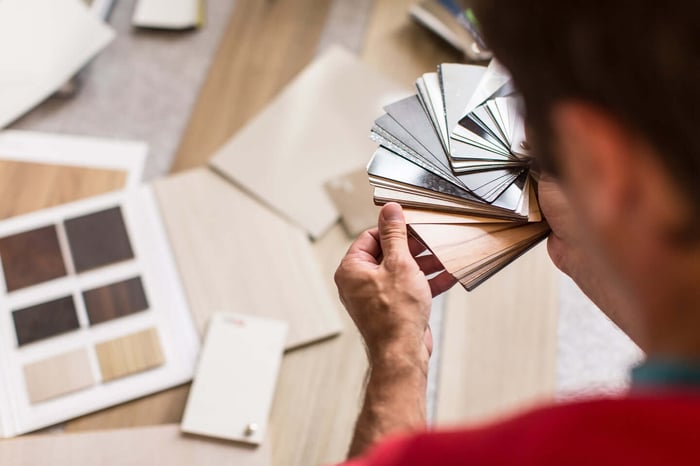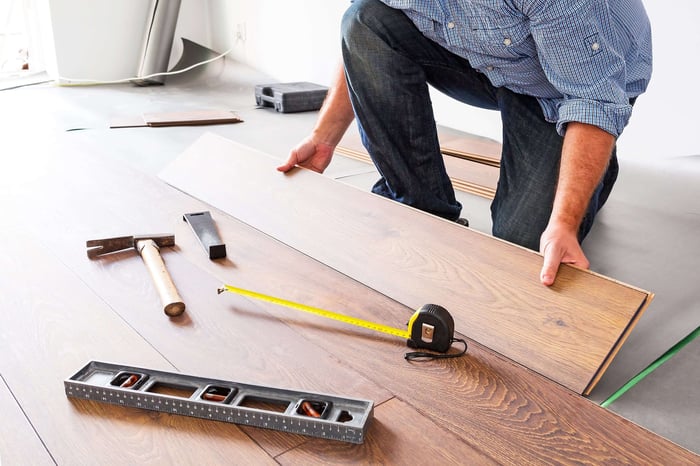You have invested in your home by installing gorgeous wood floors and now it's up to you to protect them from the wear and tear of daily activity. You know that part of regular upkeep involves cleaning and maintaining your floors. Like many property owners, however, you may not know that the changing seasons can take a toll on your wood floors.
At Harper Floors, we understand the challenges of caring for hardwood floors, and we're here to help. In this blog, we cover how to protect wood floors from changes in temperature and humidity and fluctuating levels of activity through the changing seasons. Keep your floors looking new for years to come. Read on to learn how!
Why Summer Is Bad for Wood Floors?
Both solid and engineered hardwood floors provide homes and businesses with a clean yet rustic feel.
 To maintain this aesthetic throughout the years, property owners must know how to protect wood floors from potential threats.
To maintain this aesthetic throughout the years, property owners must know how to protect wood floors from potential threats. 
When protecting hardwood floors, most people consider damage to their floors related to activity, dirt, and improper use of cleaning products. However, temperature changes and extreme sunlight can also cause stress to your hardwood floors. Fortunately, there are measures you can take to mitigate and prevent damages from seasonal changes.
Humidity
As summer weather rolls in, increased humidity typically comes along with it depending where you live. Moisture in the air causes problems for many things, from perishable food and fabrics to hardwood floors. When hardwood floors come into contact with high humidity, the floorboards may absorb moisture from the air. When this happens, the boards may begin to buckle or swell due to the sudden change in moisture in the air. Swelling floorboards create dangerous, uneven walking surfaces. Over time, swelling floorboards may also split, chip, or damage surrounding boards and floor structures.
Sunlight and Increased Temperatures
The summer sun gets hot. When refracted through the glass of a window, these beams of light can reach hazardous temperatures in some areas of the country. Over time, direct exposure to intense sunlight may damage floor finishes. Additionally, harsh summer sunlight can also discolor or cause fading to some hardwood styles. While some styles, such as Harper Floors' Kempas wood flooring, sport a varied tone look, an aggressive amount of natural sunlight can make an otherwise gorgeous hardwood interior appear dull.
Increased Activity and Debris
Finally, the start of the summer season often heralds more activity.
For families with wooden floors, increased involvement in outdoor exercise, sports, and other activities can cause an additional mess in the home. Similarly, businesses typically see increased foot traffic during the summer months. Increased foot traffic comes with added indoor humidity, spills, moisture, mud, dirt, and debris. Fortunately, taking a few precautionary steps goes a long way in protecting wood floors during those summer months. Learn how protecting your wood floors pays off in the long run and just how to do it below.
Benefits of Protecting Your Wood Floors from Summer Heat
Taking measures to protect your floor before, during, and after the summer season offers benefits such as:
- Improved appearance
- Reduced risk of damage from humidity and water
- Increased protection from scuffs, dings, and marks
- No bleaching or lightening
- Increased property value
Adopting a practical maintenance routine will get you the most out of your flooring investment. Now let’s dive into steps you can take to protect your hardwood floors.
Steps to Protect Wood Floors
There are four steps owners can take to ensure their floors last.

Step One: Regularly Clean Your Floors
Regular upkeep is the best way to protect your wood floor from the ravages of life and time. Vacuum, sweep, or dust floors weekly using standard cleaning equipment. Do not use treated dust mops, abrasive scrubbing tools, vacuums with a beater bar, and electric brooms with hard plastic bottoms without padding. Ensure that all products you use on your wood floors come specifically designed for your floor’s finish type. Finally, remember to place doormats at all entrances to your home. This will help minimize the amount of debris and dirt tracked into your home that can cause damages to your floor’s surface. Consider the traffic in each area and adjust your maintenance routine accordingly.
Step Two: Buy a Dehumidifier
Maintaining a stable home environment year round by keeping temperatures and humidity levels consistent is key to protecting your wood floors.
Can't escape the humidity? Here's how to protect wood floors. If you live in an area with humid spring and summer seasons, invest in one or more dehumidifiers for your home. These devices pull moisture from the air, preventing it from damaging your floors, drapes, and other materials.
Place dehumidifiers in rooms with high traffic or spaces like basements, which often have naturally high humidity levels. Empty the reservoirs in these machines frequently to maintain their efficiency.
Step Three: Use Window Treatments
If your home or business boasts big, open windows, you may consider using tasteful window treatments during the summer months. Translucent fabrics or blinds can even help break up refracted sunlight, reducing its potential to damage your floors. Choosing opaque window treatments will block more light in rooms that receive heavy sunlight throughout the day.
Step Four: Manage Indoor Temperatures
Keep indoor temperatures consistent. We typically recommend keeping temperatures between 60° to 80° F. Fluctuations in temperature could also lead to fluctuations in humidity levels, which we now know is one of the main culprits of buckling and swelling in your hardwood floors. Maintain consistent, comfortable indoor air temperatures using central air, fans, or air conditioning units.
Get Beautiful Wood Floors that Last
In this blog, you've learned how to protect wood floors from the heat and humidity of summer. Investing in humidifiers, tasteful window treatments, and regular upkeep will allow you to keep your hardwood floors looking new no matter what.
Browse our blog to discover the different types of wood flooring available, learn more about what subfloors are, and much more. Ready to make your dream home or business a reality? Get the gorgeous hardwood flooring you’ve been looking for, receive expert guidance, and more with Harper Floors. Based out of Los Angeles, we currently serve customers nationwide. Call 1-888-807-2704 to get started today.









